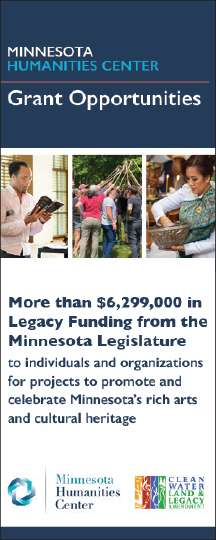Hmong Population Growth In Minnesota, Wisconsin, And California: Insights From The 2020 U.S. Census
This is a condensed summary of volume 26 of the Hmong Studies Journal written by Mark Pfeifer of the Hmong Cultural Center.
The 2020 U.S. Census revealed significant demographic shifts in the Hmong American population, with the Midwestern states – particularly Minnesota and Wisconsin – surpassing traditional hubs like California in growth rates. The data used in this analysis includes individuals who self-identified as Hmong alone or in any combination with other ethnicities.
National And Regional Overview
From 2010 to 2020, the U.S. Hmong population increased by 29%, growing from 260,073 to 335,919. This marked a 97% growth over three decades (1990-2020), highlighting the continued expansion and establishment of Hmong communities in the U.S.
The Midwest region experienced the most dramatic rise, increasing 35.7% in the last decade and now accounting for more than half of the total Hmong population in the U.S. This trend marks a substantial shift from 1990, when the majority of Hmong Americans lived in the West, especially California.
While the West – and particularly California – remains home to the largest total number of Hmong, its growth rate of 19.9% between 2010 and 2020 was significantly lower compared to the Midwest. These trends reflect ongoing migration and community consolidation in newer hubs.
State-Level Trends
Minnesota
Minnesota emerged as a central state in the Hmong American diaspora with 95,094 residents identifying as Hmong in 2020, up 43.7% from 2010. This growth was faster than any other state with a large Hmong population. From just 17,764 in 1990, Minnesota’s Hmong population has more than quintupled over 30 years.
The Twin Cities metropolitan area – particularly St. Paul – remains the cultural and population heart of Hmong Minnesota. Ramsey County, where St. Paul is located, was the county with the highest Hmong population in the country at 48,189 in 2020. Hennepin County, which includes Minneapolis and suburbs like Brooklyn Park and Brooklyn Center, followed with 24,039.
Suburban growth was particularly evident, with notable increases in Anoka County (8,334) and Washington County (8,117), further indicating a trend of suburban migration within Minnesota.
At the city level, St. Paul retained the top rank nationally, with 36,177 Hmong residents. Other significant concentrations included:
- Brooklyn Park: 9,169
- Minneapolis: 6,942
- Maplewood: 5,614
- Brooklyn Center: 5,410
- Oakdale, Coon Rapids, and Woodbury also showed growing Hmong populations, many with over 2,000 residents.
These patterns highlight a dual movement: continued strength in inner-city neighborhoods and increasing suburban dispersion.
Wisconsin
Wisconsin had the third-largest Hmong population in the country in 2020 at 62,331, up 26.6% from 2010 and nearly quadruple the number recorded in 1990. Wisconsin’s growth remains steady, particularly in urban centers and smaller cities across the state.
Milwaukee, with 12,251 Hmong residents, ranked fourth nationally among U.S. cities, while Sheboygan had 4,659 (10th nationally) and Wausau had 4,177 (12th nationally). Other Wisconsin cities with growing Hmong populations included:
- Green Bay: 3,590
- Appleton: 3,560
- Madison: 3,130
- Eau Claire: 2,798
- Oshkosh: 1,846
- La Crosse: 1,714
Among Wisconsin counties, Milwaukee County ranked fifth nationally with 14,273 Hmong residents. Marathon County (home to Wausau), Dane County (Madison), Sheboygan, and Brown County (Green Bay) also held significant shares of the state’s population.
In Sheboygan County, Census Tract 10 had 903 Hmong residents – one of the highest concentrations in the nation outside of Minnesota and California.
These distributions suggest the continued vitality and growth of Wisconsin’s mid-sized city Hmong communities, many of which originated from initial refugee resettlements in the 1970s and 1980s.
California
Despite slower growth than the Midwest, California still holds the largest total Hmong population of any state – 107,458 in 2020, up 17.8% from 2010. However, its share of the total U.S. Hmong population has declined from previous decades.
Fresno and Sacramento remain California’s leading Hmong population centers:
- Fresno: 27,705 residents (2nd nationally)
- Sacramento: 17,843 (3rd nationally)
- Stockton: 6,280
- Merced: 4,030
- Clovis and Elk Grove, suburbs of Fresno and Sacramento respectively, also showed strong numbers.
County-level figures reinforce these patterns:
- Fresno County: 36,426 Hmong residents (2nd nationally)
- Sacramento County: 32,189 (3rd)
- San Joaquin County (Stockton) and Merced County rounded out the top 10.
An unusual trend emerged in rural Trinity County, where one census tract reported nearly 2,000 Hmong residents—now the largest tract by Hmong population in the U.S. Many Hmong have migrated here for farming opportunities and a quieter rural lifestyle, making it a demographic anomaly in the national picture.
Despite suburban dispersion, central urban neighborhoods – especially Southeast Fresno and South Sacramento – remain heavily Hmong, with several census tracts reporting 700 to over 1,400 Hmong residents.
Census Tracts: Micro-Level Concentrations
Census tract data revealed Ramsey County, MN as the most concentrated location of Hmong populations at the neighborhood level. Of the top 10 census tracts with the highest Hmong populations in the country, seven were located in St. Paul’s Eastside. These areas had anywhere from 1,200 to over 1,800 Hmong residents per tract, illustrating tight-knit communities.
Two tracts in Brooklyn Park, Minnesota, and one in Fresno, California, also appeared in the top 10. Wisconsin’s highest-ranking tract was in Milwaukee, with 1,186 Hmong residents.
This fine-grain view confirms a dense, stable Hmong presence in specific neighborhoods, especially in St. Paul, with ongoing suburban expansion into places like Maplewood, North St. Paul, and Brooklyn Park.
Trends And Implications
The 2020 Census data demonstrates several key developments:
- The Midwest has overtaken California as the dynamic center of Hmong population growth, driven especially by Minnesota.
- Urban-to-suburban migration is underway in both Minnesota and Wisconsin, though core cities like St. Paul and Milwaukee remain vital hubs.
- California retains large overall numbers, but rural settlements like those in Trinity County indicate shifting migration preferences even within the state.
- St. Paul’s Eastside remains the epicenter of Hmong American life in the U.S., reinforced by both raw numbers and cultural institutions.
As the Hmong community approaches 50 years in the U.S. in 2025, these population trends suggest a dual narrative of deepening roots in historic urban centers and strategic moves toward suburban and rural growth, particularly in Minnesota and Wisconsin.















